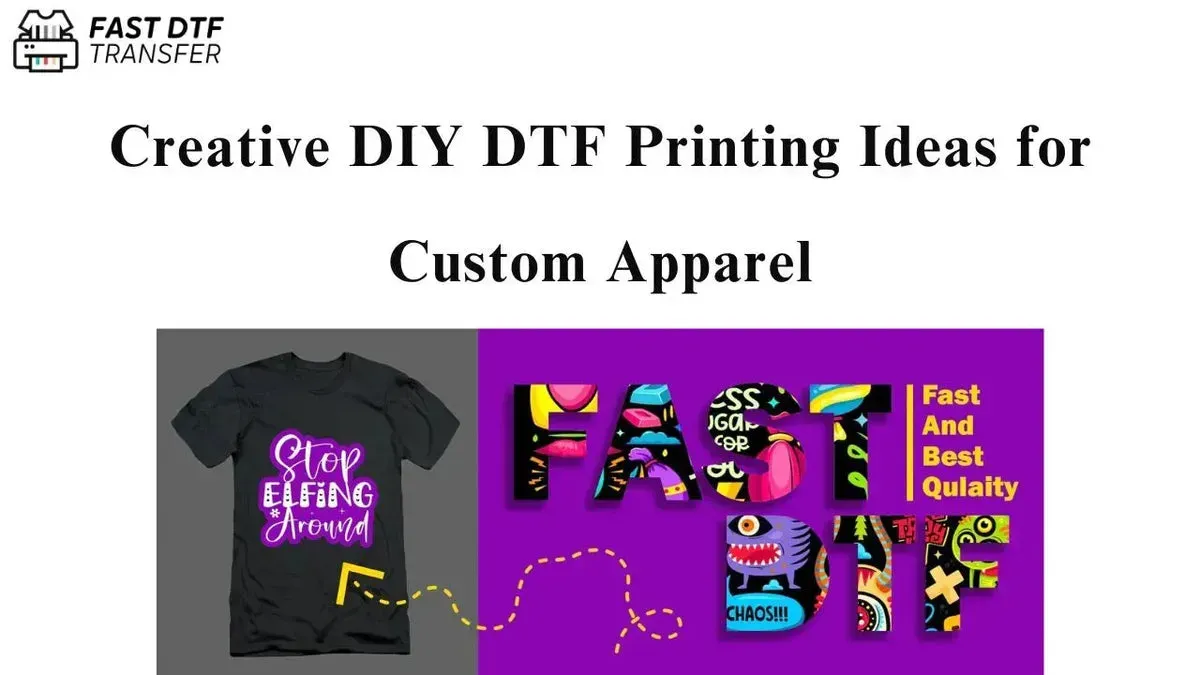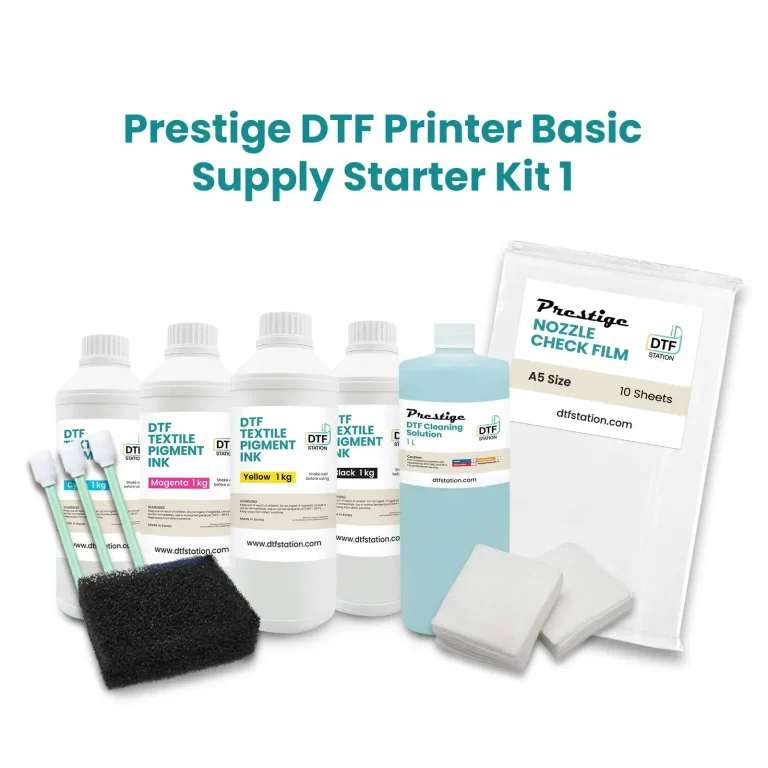DIY DTF printing, or Direct-to-Film printing, has rapidly gained popularity among crafting enthusiasts and small business owners looking to create custom apparel. This innovative technique allows for high-quality designs to be transferred onto various fabrics using specialized DTF printing supplies, making it ideal for beginners exploring creative projects. Unlike other printing methods, the DTF printing process involves printing on a specially coated film that is heat-transferred to the fabric, resulting in vibrant and durable prints. If you’re curious about how to DTF print and want to dive into the world of custom prints, understanding the essential components is vital. In this guide, we will provide insight into the supplies needed and the steps involved in this exciting method.
The realm of DIY DTF printing, a technique that has revolutionized textile design, offers endless possibilities for personalized creations. Commonly referred to as Direct-to-Film printing, this method utilizes a unique transfer film that allows vivid graphics to be easily applied to different fabric types. Understanding the fundamentals of this method is essential for novices starting their journey in custom garment creation. As we explore the indispensable materials and the entire printing methodology, you will learn how to master the art of this innovative printing technique. With a focus on DTF printing for beginners, you will gain the confidence needed to embark on your creative endeavors.
What is DTF Printing?
DTF printing, or Direct-to-Film printing, has gained significant popularity among crafting enthusiasts and small business owners alike. It distinguishes itself from traditional printing methods, such as screen printing, by utilizing a special film to carry designs. This technique not only allows for vibrant, high-resolution prints but also offers excellent durability, making it suitable for fabric applications. Understanding what DTF printing entails prepares you for the creative process and the array of supplies needed to get started.
At its core, DTF printing uses a specific type of ink, printing directly onto a transfer film. These ink formulations enable a strong bond between the print and fabric upon heat transfer, ensuring that designs remain intact even after multiple washes. For those looking to delve into custom apparel or DIY projects, knowing what DTF printing is can inspire creative ideas and encourage experimentation with various materials.
Essential Supplies for DTF Printing
To embark on your DIY DTF printing journey, you will need a comprehensive list of essential supplies. First and foremost is a DTF printer that can handle the unique inks and films. A high-quality inkjet printer, such as those from Epson, is recommended for achieving fine details and vibrant colors in your prints. Additionally, DTF inks specifically designed for transfer printing are crucial, as they provide the flexibility and brightness that characterize this printing method.
Following the printer, you’ll require high-quality DTF transfer films, which are designed to ensure optimal ink adhesion. These films are a vital part of the DTF printing process, as they do not only hold the ink but also facilitate the transfer of your designs onto various fabrics. Other necessary supplies include adhesive powder—important for binding prints to textiles—and a heat press machine to apply the right amount of heat and pressure during the transfer process.
The DTF Printing Process Explained
The DTF printing process can be broken down into simple yet effective steps. Beginning with the printing of your design, use your DTF printer to reverse print onto the transfer film. This step is crucial, as incorrect printing can lead to flawed outputs. Ensuring that your printer settings are optimized for quality can significantly enhance the vibrancy and clarity of your final product.
After printing, the next step involves applying adhesive powder onto the wet ink. This step ensures the ink will stick to the fabric once the transfer is executed. Following the powder application, you must cure the adhesive to bond it effectively with the ink, which can be done via a heat gun or oven. Finally, the transfer process is completed using a heat press, where the design is permanently fixed onto the fabric with heat and pressure.
Helpful Tips for Beginners in DTF Printing
If you’re new to DTF printing, there are several tips to enhance your crafting experience and improve the quality of your prints. Firstly, always test different fabrics to identify which ones yield the best results with DTF printing; natural fibers like cotton often work well. Additionally, ensuring that your printer settings are optimized for high resolution and quality can make a noticeable difference in the vibrancy and detail of your designs.
Maintaining a clean and organized workspace is vital in the DTF printing process, as it helps prevent contamination that could ruin a print. Moreover, taking advantage of online resources—including tutorials and forums—can provide insights and troubleshooting techniques that are especially beneficial for beginners. Resources like Printful offer comprehensive guides to building expertise in DTF printing, covering everything from supplies to troubleshooting common issues.
Understanding DTF Printing Supplies
A key component of successful DTF printing is selecting the right supplies. Each aspect, from your DTF printer to the specific inks and transfer films you use, plays a significant role in the quality of your prints. When choosing a DTF printer, prioritize models that are known for supporting transfer film and ink types tailored for this unique printing process to ensure optimal results.
Additionally, quality transfer films and adhesive powders should not be overlooked. High-grade materials can elevate your DTF printing projects, creating finished products that are both visually stunning and long-lasting. Since the relationship between different supplies is interdependent, thoroughly researching each component will lead to a more successful DIY printing experience.
How to Master the DTF Printing Technique
Mastering the DTF printing technique requires patience and practice. Start by familiarizing yourself with the entire process, from design creation through to the final transfer. Experimenting with varied designs and materials helps to refine your skills and discover what unique techniques work best for your projects. Many beginners find themselves overwhelmed at first, but consistent practice can lead to impressive results.
In addition to practical experience, consider investing time in learning graphic design software if you haven’t already. Programs like Adobe Illustrator or CorelDRAW are instrumental in creating and preparing designs for print. Enhanced design skills coupled with mastery over the DTF printing process can open numerous doors in creative projects, allowing for more intricate and personalized creations.
Frequently Asked Questions
What is DTF printing and how does it work?
DTF printing, or Direct-to-Film printing, is a method that involves printing designs onto a special transfer film that is then applied to fabrics using heat. The process includes printing your artwork in reverse, coating it with adhesive powder, curing the powder, and finally pressing the film onto the fabric with a heat press. This technique allows for vibrant, durable prints.
What supplies do I need to get started with DIY DTF printing?
To begin DIY DTF printing, you need several essential supplies including a compatible DTF printer, DTF inks, high-quality transfer films, adhesive powder, a heat press machine, and graphic design software. These tools will enable you to create professional-quality prints at home.
How do I execute the DTF printing process as a beginner?
For beginners, the DTF printing process involves printing your design in reverse on transfer film, dusting it with adhesive powder while the ink is still wet, curing the powder to attach it to the ink, and then using a heat press to transfer the design onto your fabric. Following these steps will help ensure successful prints.
What types of fabrics work best for DIY DTF printing?
DIY DTF printing is versatile and can be done on a variety of fabrics, including cotton, polyester, and blends. However, testing different materials can help you determine which fabric holds the DTF prints best and gives the desired quality for your projects.
Can I use any printer for the DTF printing process?
No, not all printers are suitable for DTF printing. You need a specific inkjet printer that supports DTF inks. Many crafters prefer using Epson printers, which are known for their high-quality output and compatibility with DTF materials.
How do I ensure high-quality results in my DIY DTF printing projects?
To achieve high-quality results in DIY DTF printing, ensure that you optimize your printer settings for the best resolution, maintain a clean workspace to prevent contamination, and invest in high-quality DTF inks and transfer films. Additionally, consider experimenting with different fabrics and adhesive powders.
| Essential Supplies | Description |
|---|---|
| DTF Printer | A compatible inkjet printer that supports DTF inks, crucial for high-quality output. |
| DTF Inks | Acrylic-based inks that provide flexibility, durability, and vibrant colors. |
| Transfer Films | High-quality films that enhance ink adhesion for clear transfers. |
| Adhesive Powder | A fine, heat-resistant powder that binds the design to the fabric during transfer. |
| Heat Press Machine | A machine allowing adjustable temperatures and pressure for effective transfers. |
| Graphic Design Software | Software like Adobe Illustrator or CorelDRAW for creating and customizing designs. |
Summary
DIY DTF printing is a revolutionary technique that empowers individuals to create custom designs on various fabrics. This method allows for a wide range of creative expressions, making it an appealing choice for hobbyists and small business owners alike. By investing in essential supplies such as a DTF printer, DTF inks, transfer films, adhesive powder, a heat press machine, and graphic design software, you can embark on a fulfilling journey of crafting high-quality, vibrant prints. Understanding the processes involved—from printing to heat transferring—will enhance your skills and outcomes. As you experiment and develop your unique style, DIY DTF printing will enable you to transform ordinary fabrics into extraordinary pieces that reflect your creativity.






